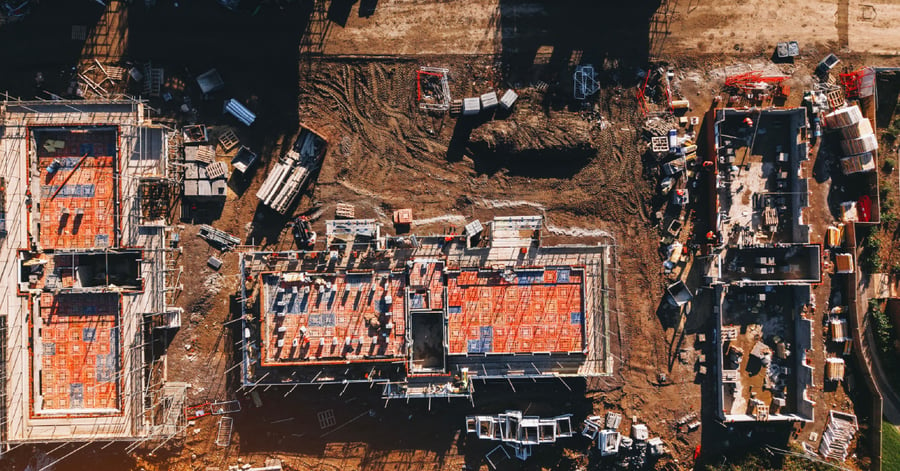
Defining Noise Reduction Coefficient: Your Guide to NRC Ratings
Amanda Gilliam
Not all sound barriers are created equal. And if you choose the wrong kind, the consequences can be costly for your project. In this guide, we’ll break down what Noise Reduction Coefficient (NRC) means and how you can use it to make informed decisions about noise control in your environment.
What Is Noise Reduction Coefficient (NRC)?
Noise Reduction Coefficient is a single-number rating used to represent how much sound a material absorbs. Specifically, it indicates the absorption performance of a material across four frequencies: 250 Hz, 500 Hz, 1000 Hz, and 2000 Hz.
NRC ratings range from 0 to 1:- An NRC of 0 means the material absorbs no sound
- An NRC of 1 means the material absorbs 100% of the sound that hits it
For example, if an acoustic panel has an NRC rating of 0.75, it absorbs approximately 75% of the sound energy that strikes its surface, while reflecting the remaining 25% back into the space.
Common Materials and Their NRC Ratings
Different materials offer varying degrees of sound absorption capability:
- Concrete: 0.00-0.05 NRC (virtually no absorption)
- Carpet: 0.15-0.45 NRC (moderate absorption)
- Standard acoustic ceiling tiles: 0.50-0.70 NRC (good absorption)
- Acoustic foam panels: 0.60-0.90 NRC (very good absorption)
- Professional acoustic treatments: 0.80-1.00 NRC (excellent absorption)
Industry-specific solutions often utilize specialized materials. For instance, directional drilling operations might require double-layered acoustic barriers with particular NRC profiles to address the distinctive noise patterns of drilling equipment.
The Hidden Costs of Using Non-Absorptive Materials
When project managers choose non-absorptive materials with low NRC ratings, the consequences can be costly. Reflective surfaces simply bounce sound waves back into the space or redirect them toward other areas, often creating new problems.
Reflected noise can create "hot spots" where sound levels exceed safety thresholds, potentially leading to OSHA violations and workplace hearing damage. Even worse, when multiple reflective surfaces exist in a space, they can create standing waves and resonance effects that actually amplify certain frequencies, making the noise problem significantly worse than before.
This is why professional acoustical consultants evaluate multiple metrics and consider the specific noise profile of your environment when recommending solutions.
Limitations of NRC as a Metric
While NRC provides valuable information, it's important to understand its limitations. Two materials with identical NRC ratings might perform quite differently at specific frequencies. NRC is an average value across only four specific frequencies (250 Hz, 500 Hz, 1000 Hz, and 2000 Hz). For example, imagine two different materials, both with an NRC rating of 0.70:
Material A:- 250 Hz: 0.70 absorption
- 500 Hz: 0.70 absorption
- 1000 Hz: 0.70 absorption
- 2000 Hz: 0.70 absorption
- 250 Hz: 0.40 absorption
- 500 Hz: 0.60 absorption
- 1000 Hz: 0.90 absorption
- 2000 Hz: 0.90 absorption
Both materials have the same average (0.70 NRC), but Material A absorbs sound evenly across all frequencies, while Material B is much more effective at higher frequencies and much less effective at lower frequencies.
This difference matters tremendously in real-world applications. If your noise problem is primarily low-frequency rumbling from HVAC equipment (around 250 Hz), Material A would be far more effective despite having the identical NRC rating as Material B. If your concern is higher-frequency speech clarity in an office (1000-2000 Hz), Material B would perform better.
Partner With Noise Professionals
Understanding NRC ratings is an essential step in addressing sound management in any environment. However, effective noise control goes beyond simply selecting materials with high NRC ratings. It requires a comprehensive approach that considers your specific acoustic challenges, regulatory requirements, and operational needs.
Whether you're managing an oil refinery, overseeing a data center expansion, or planning an entertainment venue, partnering with acoustic specialists ensures you'll find solutions that actually absorb the right frequencies for your unique situation — creating healthier, more productive, and compliant environments.
Contact Environmental Noise Control today to discover how our expertise can help you develop targeted noise management strategies backed by science, not just marketing promises.


